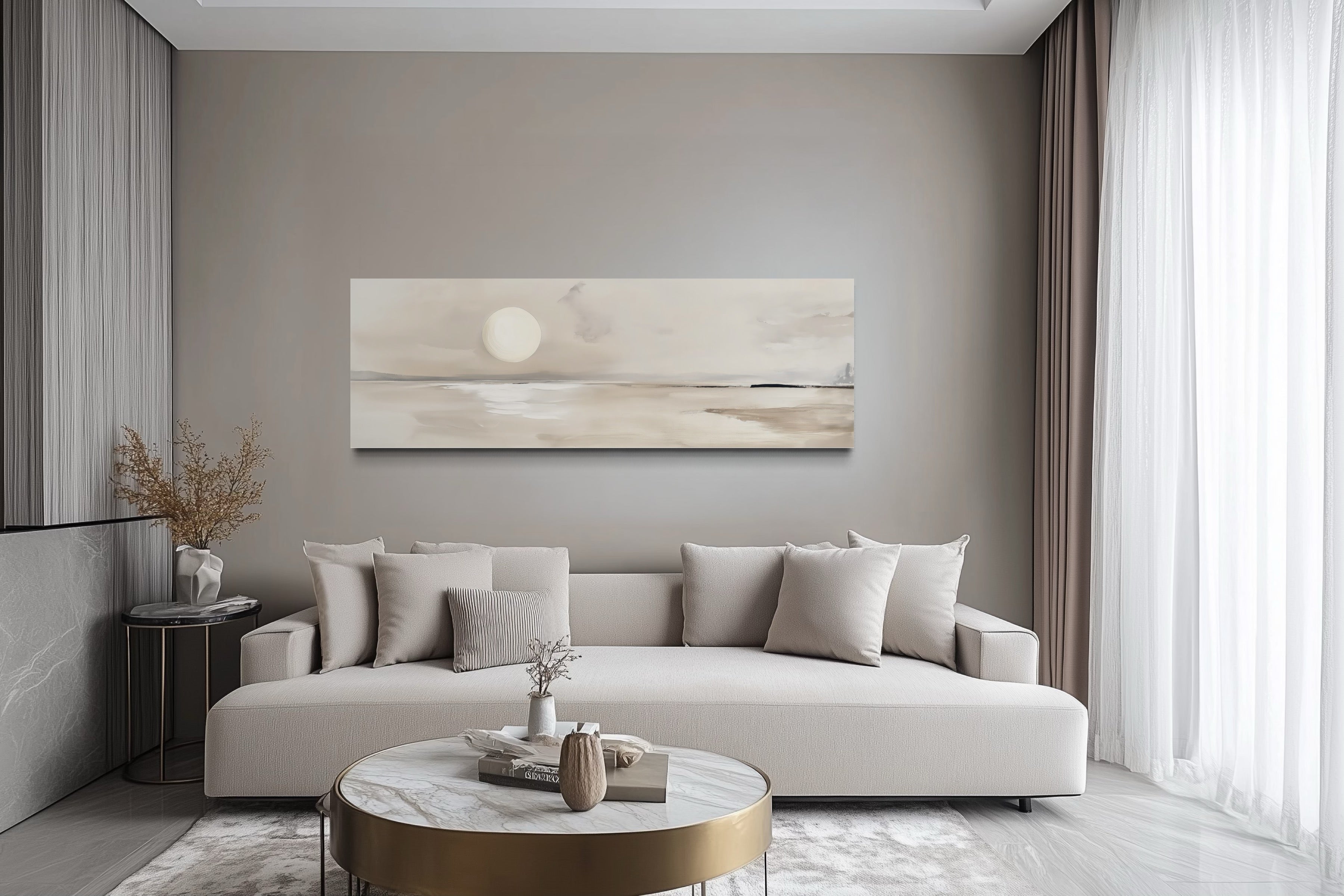Scaling Wall Art for Big Walls: A Photographer's Guide
As a professional photographer, you have an eye for detail, a knack for composition, and an innate ability to transform ordinary moments into extraordinary visual narratives. One of the most rewarding ways to showcase your work is by displaying it as wall art on big walls. Understanding the art of scaling wall art for big walls is crucial in creating a striking visual impact that captivates viewers.
Big walls offer a unique opportunity to display artwork that not only fills space but also becomes the focal point of a room. However, the challenge lies in ensuring that the art complements the space without overwhelming it. This is where the skill of scaling comes into play. Whether you're presenting your work in a gallery or helping a client enhance their home, mastering this skill is essential.

The Importance of Scale in Wall Art
The scale of wall art refers to the size of the artwork relative to the space where it is displayed. The right scale can elevate a room's aesthetic, while the wrong scale can make even the most beautiful piece seem out of place. For photographers, this means considering how the dimensions of your prints relate to the wall space available.
When working with large walls, its important to think big. A common mistake is choosing art that is too small, which can make a space feel empty or incomplete. Instead, opt for larger prints or a series of pieces that work together to create a cohesive display. This ensures that your art commands attention and enhances the overall atmosphere.
Choosing the Right Artwork
Choosing the right artwork is crucial when scaling for big walls. As a photographer, consider the subject matter and style of your work. Bold, vibrant images can be particularly effective on large walls, drawing the viewer in and making a strong visual statement. Conversely, a series of smaller, more subtle photographs can create a dynamic gallery wall that invites closer inspection.
Its also important to consider the rooms existing dcor. The artwork should complement the color scheme, furniture, and overall style of the space. This doesnt mean your art should blend in, but rather enhance and elevate the rooms aesthetic.
Utilizing Composition and Layout
Composition and layout play a significant role in how wall art is perceived. For big walls, consider using a grid or salon-style layout to display multiple pieces. This can create a sense of rhythm and movement, guiding the viewer's eye across the wall. Alternatively, a single large piece can serve as a bold centerpiece.
When arranging multiple pieces, consider the spacing between each. Too much space can make the arrangement feel disjointed, while too little can create a cluttered look. Experiment with different layouts to find the perfect balance.
Practical Tips for Hanging Wall Art
Once youve selected the artwork and decided on the layout, its time to hang your pieces. Here are some practical tips:
- Use a measuring tape and level to ensure your artwork is hung straight and evenly spaced. This attention to detail is crucial in maintaining a professional appearance.
- Consider the height at which you hang your art. Eye level is generally recommended, but for very large pieces, slightly above or below eye level can work well.
- If youre working with heavy pieces, make sure to use the appropriate hardware to secure them safely to the wall.
For more detailed guidance on hanging large art, check out this comprehensive guide on hanging large art on stairwell walls, which offers practical advice and tips.
Professional Presentation Matters
Presentation is key when showcasing your work. Consider using high-quality frames that complement the artwork and the rooms dcor. Additionally, proper lighting can enhance the colors and details of your photographs, ensuring they look their best.
When framing your work, consider the style and material of the frame. A sleek, modern frame can add a contemporary touch, while a classic wooden frame might suit more traditional interiors. For innovative ideas on photo displays, explore this article on creating no-frame photo wall displays.

Inspiration and Ideas
Looking for inspiration? Platforms like Pinterest are excellent resources for discovering creative ways to scale wall art for big walls. From minimalist designs to elaborate galleries, theres a wealth of ideas to explore.
Additionally, understanding the stories behind your photographs can add depth and intrigue to your displays. Sharing these narratives with viewers can create a more engaging and personal connection.
FAQs
What size should I choose for large wall art?
The size of your wall art should be proportional to the size of the wall. Generally, larger pieces or a series of pieces work best for big walls. Consider the overall room size and layout when choosing dimensions.
How do I arrange multiple pieces of art?
Arranging multiple pieces can be done in various ways, such as a grid or salon-style layout. Ensure that there is enough space between each piece to maintain a cohesive look.
What is the best way to light wall art?
Lighting is crucial in highlighting your art. Use spotlights or track lighting to accentuate details and colors. Ensure that the lighting is even and does not create unwanted shadows or glare.
For more ideas on large art and decor, visit this page on Big Wall Decor, where you'll find a variety of options and tips for enhancing your space.
As you embark on the journey of scaling wall art for big walls, remember that each space is unique, and your art should be a reflection of your creative vision. By carefully considering scale, composition, and presentation, you can transform any large wall into a captivating gallery that showcases your photographic prowess.

